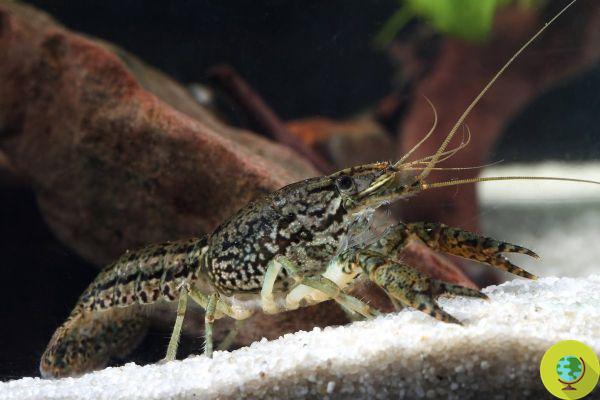
Hundreds of marbled shrimps have invaded Antwerp's Schoonselhof city cemetery, Belgium, infesting puddles and streams
He is about to end up run over, his mother saves himA creature capable of "cloning", a very invasive species that reproduces by partogenesis and that was born in the 90s in the laboratory. It's the marbled shrimp. And the Antwerp Schoonselhof city cemetery has been invaded by hundreds of these creatures, which have infested pools and streams around the grounds, posing a danger to local biodiversity.
Marbled shrimp have also been spotted in the Berchem area of Antwerp and Leuven, The Brussel Times reported.
"People often get tired of their animals or the marbled shrimp population becomes too large at home," said Kevin Scheers of the Flemish Institute for Nature and Woodland Research (INBO). “It must seem like a good idea to let the animals free in nature.
The marbled shrimp (Procambarus virginalis) is a creature that did not exist in nature, but is thought to have been created experimentally by pet traders in Germany in the 90s.
It is a very invasive species that reproduces by parthenogenesis, literally clones itself and that could supplant the species present in nature. DNA sequencing of the animal indicates that the species is likely to be the product of two members of a different crayfish species, related to each other, as confirmed by a study published in Nature Ecology and Evolution:
“Systematic fieldwork and genotyping have demonstrated the rapid expansion of marbled shrimp in Madagascar and established that marbled shrimp is a powerful invader of freshwater ecosystems. Furthermore, comparative whole genome sequencing demonstrated population clonality and their genetic identity with the oldest known stock from the German aquarium trade. Our study fills an important gap in the phylogenetic analysis of animal genomes and uncovers the unique evolutionary history of an emerging invasive species, ”the research reads.
Already banned in the European Union and in some parts of the United States due to the threat it poses to freshwater ecosystems, the shrimp is widespread in Madagascar and now also in some European areas such as Belgium.
Since a single specimen can clone and reproduce exponentially, it poses a threat to the local environment. The shrimp eats anything it can get hold of and is able to travel up to 2km and burrow to a depth of one meter.
"The marbled shrimp measures about 10cm and crawls in both water and land at night," Scheers said. "That's how they move to other channels and pools."
For the moment, there is no easy way to get rid of the growing population.
"Some experiments with poison have been tried in Spain, but this is not allowed in Belgium."
In 2014, the European Union introduced a total ban on the “possession, trade, transport, production and release” of the species in the wild. However, since all specimens of the species are identical, it would be impossible to trace the provenance of those found in cemeteries in Belgium.
To say little disturbing.
Sources of reference: Nature Ecology and Evolution ,, The Brussel Times
READ also:
- The shrimp that clones itself and can help us fight cancer


























